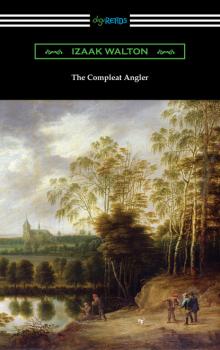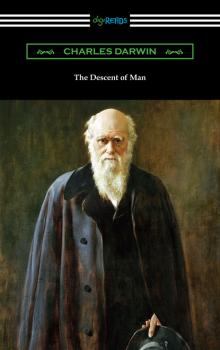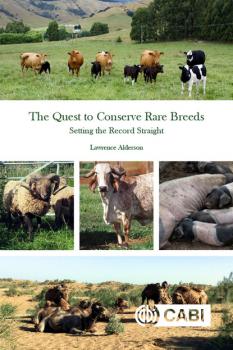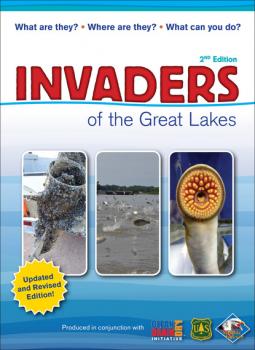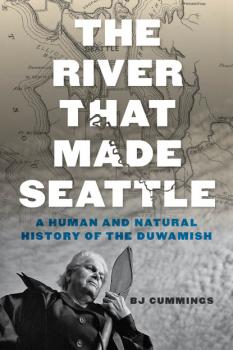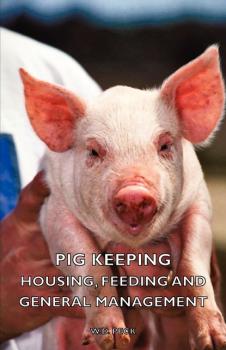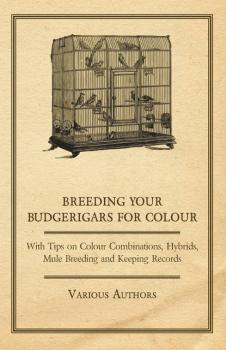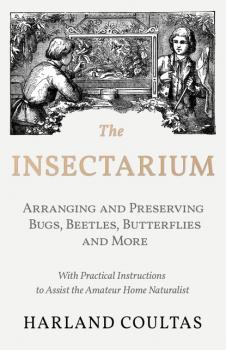Биология
Различные книги в жанре БиологияThe Compleat Angler
First published in 1653, Izaak Walton’s “The Compleat Angler” is a classic and much-loved treatise on the art of fishing. Immediately popular after its publication, “The Compleat Angler” was reprinted and updated numerous times by Walton. Written as a conversation between the fictional characters of the experienced angler Piscator and his student Viator, which was changed to a hunter named Venator in later editions, the treatise is part an instructional manual on how to catch and eat fish and part a loving tribute to the English pastoral lifestyle and its incredible scenery. Walton’s influential manual was written shortly after the end of the English Civil War, a time of great upheaval and unrest, and extolled a return to a simpler life in the countryside as an antidote to national and personal tragedy. In 1676, Walton’s friend and fellow fishing enthusiast, Charles Cotton, added a second part which included lessons on fly fishing and tying flies, thus expanding the volume significantly. Both of these two parts are included here in this edition. “The Compleat Angler” is a timeless masterpiece on the art and sport of fishing.
The Descent of Man
First published in 1871 and considered his other great work alongside “The Origin of Species,” Darwin’s “The Descent of Man” is a work that continues the scientist’s theories on evolution. Divided into three parts, this book’s purpose, as given in the introduction, is to consider whether or not man is descended from a pre-existing form, his manner of development, and the value of the differences between human races. Darwin goes on to systematically explore the evolution of man in terms of physical and mental traits, to condemn the debate on whether humans of different races were of different species, to expound his theory of sexual selection, and to address natural selection and its effect on civilized society, establishing some of the founding ideas on eugenics and what has come to be known as Social Darwinism. Still of great interest and importance in scientific thought today, “The Descent of Man” is a foundational text on the science of human evolution. This edition includes a biographical afterword.
The Voyage of the Beagle
Also known as Charles Darwin’s “Journal of Researches,” “The Voyage of the Beagle” is an exquisite travel memoir, a detailed scientific journal, and the foundation for one of the most important scientific discoveries of the 19th century. It is the account of Darwin’s time aboard the HMS Beagle, which set sail from Plymouth Sound on December 27, 1831 under the command of Captain Robert FitzRoy. Published in 1839 along with other accounts of the voyage, Darwin’s scientific volume makes many detailed and brilliant observations in the fields of biology, geology, and anthropology; observations that would later lay the groundwork for his theory of evolution by natural selection. The Beagle’s trip of exploration and discovery was originally planned to last for only two years, but instead lasted nearly five years. Darwin used this time to exhaustively observe and record the flora and fauna he found on land and at sea. Captured in fascinating detail are the volcanoes and unusual animals of the Galapagos, the mesmerizing coral reefs of Australia, and the rugged beauty of Patagonia. A classic and pivotal scientific work, “The Voyage of the Beagle” provides powerful insight into the observations that led Darwin to his groundbreaking theories. This edition includes a biographical afterword.
The Quest to Conserve Rare Breeds
Since the middle of the twentieth century the world has witnessed a succession of political and social disruptions. Globalisation, technological advancement, climate change, human migration, war and conflict – all have caused major worldwide upheavals.
In this light, it's unsurprising that conservation of rare breed animals has been neglected. Yet the preservation of these genetic resources – this biological diversity – is an essential ingredient of sustainable life on Earth, and not something we can afford to lose.
This book challenges often repeated 'facts' about livestock farming, straight from the horse's mouth. In it, rare breeds expert Lawrence Alderson CBE argues for a reasoned and evidence-based approach from political and public circles. Correcting misconceptions as he goes, he recounts the creation and development of the rare breed conservation movement, addresses extinctions and genetic safe-guarding measures, and considers where we go from here. Challenged as we are by climate change, sustainability and feeding the world, perhaps it is these endangered animals that hold the answer – perhaps with them, we can adapt to our changing environment and see a way forward to a more certain future.
ECG Interpretation in Equine Practice
Advances in veterinary medical technology now provide easier and more affordable access to equine ECG recording and transmitting equipment, making ECG recordings a useful tool for equine veterinarians in both field and hospital settings.
Covering the basics of equine ECG recording, analyses and interpretation, this book provides a practical approach with details of how to get the most information out of your ECG recordings. The only book dedicated to equine ECGs, it includes:
– Numerous clear ECG illustrations – Worked case examples to put theory into practice – New pharmacological therapies and interventional techniques
A hands-on guide for veterinarians to use when recording, diagnosing and treating arrhythmias in horses, this book will be invaluable to both specialists and those who find themselves evaluating the occasional equine patient.
Invaders of the Great Lakes
First edition (9781591932925) sold more than 50,000 copies Market: Addresses growing environmental concerns while providing readers with “How You Can Help” details Revised second edition with updated information about how the invasive species impact you, your environment, and the economy Packed with useful facts and statistics in a small, convenient, easy-to-use format Comprehensive: covers 44 aquatic invasive species, including the newest threats, from flying carp and lampreys to spiny water fleas Full-color photographs, need-to-know details, and portions of the guide devoted to AIS spread and impacts Quick Response (QR) code for every species, linking readers to more in-depth information online Great impulse buy—only $6.95!
The River That Made Seattle
With bountiful salmon and fertile plains, the Duwamish River has drawn people to its shores over the centuries for trading, transport, and sustenance. Chief Se’alth and his allies fished and lived in villages here and white settlers established their first settlements nearby. Industrialists later straightened the river’s natural turns and built factories on its banks, floating in raw materials and shipping out airplane parts, cement, and steel. Unfortunately, the very utility of the river has been its undoing, as decades of dumping led to the river being declared a Superfund cleanup site.Using previously unpublished accounts by Indigenous people and settlers, BJ Cummings’s compelling narrative restores the Duwamish River to its central place in Seattle and Pacific Northwest history. Writing from the perspective of environmental justice—and herself a key figure in river restoration efforts—Cummings vividly portrays the people and conflicts that shaped the region’s culture and natural environment. She conducted research with members of the Duwamish Tribe, with whom she has long worked as an advocate. Cummings shares the river’s story as a call for action in aligning decisions about the river and its future with values of collaboration, respect, and justice.
Pig Keeping - Housing, Feeding and General Management
This book is a complete guide to all aspects of pig keeping. Full of practical advice, instruction, and useful diagrams and photos, it focuses mainly on the three most important aspects of pig keeping – Housing, Feeding and General Management. Contents Include : Policies in Perspective Choosing the System Housing Pig Keeping Equipment Feeding in Theory Feeding In Practice Feeding A Matter of Choice Breeding Better Pigs Management Breeding Stock Management Farrowing Management Rearing Management Fattening Health and Disease Copper or Gold? Grading Standards for Bacon Pigs Price Conversion Table Chemical Analyses of Feeding Stuffs Standard Rations for Home Mixing Useful Addresses Notifiable Diseases of Pigs Pork, Bacon or Heavy Hog? Standards of Performance for Breeding and Fattening Pigs References
Breeding your Budgerigars for Colour - With Tips on Colour Combinations, Hybrids, Mule Breeding and Keeping Records
This antique book contains a detailed and interesting guide to breeding very specific colours into pet budgerigars, as well as containing detailed information on hybrids, mule breeding, and the importance of record keeping. The perfect book for both professional and private breeders, this text is both easy-to-digest and detailed, and constitutes a great addition to any collection of avicultural literature. Chapters contained in this book are: 'The Elements of Colour Production', 'The Colour Varieties and Recommended Pairings', 'Colour Production', 'In-Breeding', 'Hybrids and Mule Breeding', and 'Keeping Records'. This book has been chosen for modern republication because of its timeless educational value, and is proudly republished here complete with a new introduction to the subject of aviculture.
The Insectarium - Collecting, Arranging and Preserving Bugs, Beetles, Butterflies and More - With Practical Instructions to Assist the Amateur Home Naturalist
“The Insectarium” is a vintage guide to setting up and maintaining an insectarium, originally written for entomologists and naturalists. An insectarium is an artificial habitat for insects where they can be displayed and studied. They usually contain a variety of insects and similar arthropods, such as spiders, beetles, cockroaches, ants, bees, millipedes, centipedes, crickets, grasshoppers, etc. This volume contains practical tips on creating and maintaining one, as well as information on where and how insects can be captured. Contents include: “The Capture of Insects”, “Beetles”, “Butterflies and Moths”, “Insectarium”, “Origin of the Insectarium”, “How an Insectarium should be Constructed and Regulated”, “Caterpillar Breeding in the Insectarium”, “How to Preserve Butterflies in the Insectarium”, “Ichneumon Parasites”, etc. Many vintage books such as this are increasingly scarce and expensive. It is with this in mind that we are republishing this volume now in a new, affordable, modern edition complete with the original text and artwork.
